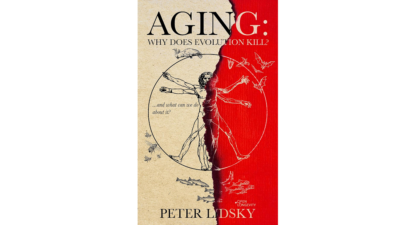In a new study published in GeroScience, researchers have shown that it is possible to significantly increase yeast lifespan by overexpressing genes highly conserved across various species [1].
Survival and aging
The question of the effects of nature versus nurture, or programmed versus stochastic, sparks hot scientific debate in other fields as well as aging. A similarly controversial question involves how much research into other species can actually be translated to humans.
This study addresses both issues. The researchers sought to explore if essential, highly conserved genes, which are common to both yeast and people, can be manipulated to extend lifespan.
The authors use the term “essential genes” to describe the genes required for the survival of an organism. These genes are usually conserved across species and undergo little sequence change in evolution. They are also heavily expressed and form hubs of protein-protein interaction networks.
Paradoxically, essential genes tend to be understudied precisely because they are essential. The two most widely used techniques to explore gene function, knockout (deletion) and knockdown (reduced expression), lead to organismal inviability when applied to such important genes, so studies involving these methods are rare.
The importance of essential genes for organismal survival might go hand in hand with their ability to control the rate of aging. However, previous experiments on the nematode worm C.elegans showed that out of almost 3,000 essential genes screened, partial knockdown of only 2% of them in adulthood resulted in increased lifespan [2].
The researchers then argue that instead of reducing the expression of essential genes, their upregulation is more likely to increase lifespan. They chose S. cerevisiae yeast as a convenient model organism to check this hypothesis. Importantly, most yeast essential genes are identical to their human homologs, while about half of them can be replaced by their human counterparts without compromising their function.
Dialing up, not down
First, the researchers generated 993 yeast strains, each with an increased expression of one essential gene by a specific bacterial plasmid. They then randomly selected 92 strains and assessed their replicative lifespan, as measured by the number of daughter cells a mother cell produces before becoming senescent [3]. 20 to 80 individual mother cells in each strain were analyzed in both experimental and corresponding wild-type control groups.
Only 5 of these strains showed any growth difference from the control group. In the preliminary replicative lifespan analysis, the researchers identified 29 (~32%) strains with at least 20% longer lifespan and 6 (7%) strains with at least 20% shorter lifespan than controls.
The overexpressed essential genes of the long-lived strains are known to perform various functions, such as DNA repair, vesicle trafficking, mRNA surveillance, post-translational modification, and oxidative stress resistance. This highlights the complexity of aging along with the expected success of multi-targeted approaches to extend healthy lifespan.
Further analysis of the long-lived strains confirmed 19 strains with significantly increased median replicative lifespan. Moreover, the researchers verified that the observed longevity was the result of the upregulated essential gene expression in three out of these 19 strains, as they removed the plasmid and observing a shortening of lifespan back to the wild-type level.
A close look at individual genes
To assess if the longevity effect was achieved via the same mechanisms, the researchers performed comparative transcriptome analysis of four long-lived strains, each overexpressing one of these essential genes involved in RNA metabolism: LSM5, TIF35, UTP6, and PRP22.
On average, the overexpression of each of the four essential genes was doubled, which was enough to increase replicative lifespan. Importantly, there was a significant overlap of the genes affected by the overexpression of UTP6, TIF35, and PRP22, suggesting a common mechanism at play. Among the common affected downregulated genes were those potentially involved in the activity of transposable elements, suggesting an important role of this process in aging.
In addition, the researchers identified several exceptionally long-lived strains, with the overexpression of GDI1 and TIF35 leading to more than 50% median replicative lifespan increase. The former gene is involved in autophagy and protein quality control, while the latter participates in protein synthesis initiation.
Abstract
At the cellular level, many aspects of aging are conserved across species. This has been demonstrated by numerous studies in simple model organisms like Saccharomyces cerevisiae, Caenorhabdits elegans, and Drosophila melanogaster. Because most genetic screens examine loss of function mutations or decreased expression of genes through reverse genetics, essential genes have often been overlooked as potential modulators of the aging process. By taking the approach of increasing the expression level of a subset of conserved essential genes, we found that 21% of these genes resulted in increased replicative lifespan in S. cerevisiae. This is greater than the ~ 3.5% of genes found to affect lifespan upon deletion, suggesting that activation of essential genes may have a relatively disproportionate effect on increasing lifespan. The results of our experiments demonstrate that essential gene overexpression is a rich, relatively unexplored means of increasing eukaryotic lifespan.
Conclusion
In this pioneering study, the researchers identified a surprisingly high number of pro-longevity factors among essential genes in yeast by increasing their expression rather than decreasing it. The question, as always, is whether or not this technique would work in other species, particularly humans. Given that the genes are highly conserved, it just might.
Of course, there are still a lot of other questions to answer first. In this study, only 10% of essential genes that are potentially important for longevity were analyzed. Thus, there is a lot of room for exploring, even in yeast.
Literature
[1] Oz, N. et al. Evidence that conserved essential genes are enriched for pro-longevity factors. Geroscience (2022) doi:10.1007/s11357-022-00604-5.
[2] Curran, S. P. & Ruvkun, G. Lifespan regulation by evolutionarily conserved genes essential for viability. PLoS Genet. 3, e56 (2007).
[3] Sutphin, G. L., Delaney, J. R. & Kaeberlein, M. Replicative life span analysis in budding yeast. Methods Mol. Biol. 1205, 341–357 (2014).








